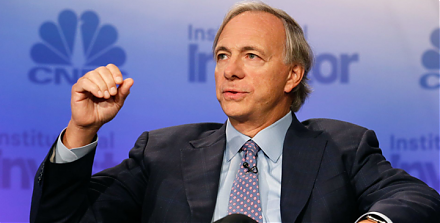

2019-04-23 19:45:00 Tue ET
technology antitrust competition bilateral trade free trade fair trade trade agreement trade surplus trade deficit multilateralism neoliberalism world trade organization regulation public utility current account compliance
Income and wealth concentration follows the ebbs and flows of the business cycle in America. Economic inequality not only grows among people, but it also grows among companies. A recent McKinsey study shows that only 10% of 5,750 public and private companies (each with over $1 billion in total revenue) account for 80% of their net profits. These top 10% superstar companies can create almost as much firm value as the bottom 10% companies destroy on an annual basis. The top 10% superstar wealth creation has grown 1.6 times in the past 20 years, whereas, the bottom 10% value erosion has risen only 1.5% in the same time frame. One major root cause of this wealth divergence is the corporate focus on key intangible assets and intellectual properties such as patents, trademarks, databases, robots, cloud services, and software solutions. These intangible assets thus serve as affordable competitive moats for the top 10% superstar companies. These top 10% superstar firms spend about 2 to 3 times more on R&D than their peers and hence account for 70% of all R&D expenditures in Corporate America as of early-2019.
However, the top 10% superstar companies are less likely to maintain their product market dominance because half of the superstar companies lose their competitive advantages over the course of one single real business cycle (or about 7-9 years). For this reason, tougher antitrust scrutiny may not be the panacea for addressing the economic implications of anti-competitive clout in tech titans (Apple, Amazon, Alibaba, Facebook, Google, Microsoft, Nvidia, and Twitter), big biotech bellwethers (Johnson & Johnson, Pfizer, Merck, Abbot, Amgen, and Bristol-Myers Squibb etc), and telecoms (Verizon, AT&T, Sprint, and T-Mobile etc). Weaker product market competition may help explain why U.S. productivity growth, capital investment, and wage growth continue to stagnate in recent years.
This dilemma often manifests in the 7%-8% increase in average markups over the marginal costs for more than 900,000 firms from 2000 to early-2019 in accordance with a recent IMF staff report. The higher markups significantly correlate with lower capital investment, subpar wage growth, and less disposable income for the typical U.S. household. In other words, these markups represent the inadvertent social price of market power. Overall, it is important for regulators to help promote greater market competition in several industries such as technology, energy, medicine, air transport, and telecommunication etc.
If any of our AYA Analytica financial health memos (FHM), blog posts, ebooks, newsletters, and notifications etc, or any other form of online content curation, involves potential copyright concerns, please feel free to contact us at service@ayafintech.network so that we can remove relevant content in response to any such request within a reasonable time frame.
2019-08-14 10:31:00 Wednesday ET

Netflix suffers its first major loss of U.S. subscribers due to the recent price hikes. The company adds only 2.7 million new subscribers in 2019Q2 in stark
2023-12-09 08:28:00 Saturday ET

International trade, immigration, and elite-mass conflict The elite model portrays public policy as a reflection of the interests and values of elites. I
2019-04-25 09:35:00 Thursday ET

Bridgewater hedge fund founder Ray Dalio suggests that the current state of U.S. capitalism poses an existential threat for many Americans. Dalio deems the
2020-05-28 15:37:00 Thursday ET

Platform enterprises leverage network effects, scale economies, and information cascades to boost exponential business growth. Laure Reillier and Benoit
2021-02-02 14:24:00 Tuesday ET

Our proprietary alpha investment model outperforms the major stock market benchmarks such as S&P 500, MSCI, Dow Jones, and Nasdaq. We implement
2018-03-05 07:34:00 Monday ET

Peter Thiel shares his money views of President Trump, Facebook, Bitcoin, global finance, and trade etc. As an early technology adopter, Thiel invests in Fa